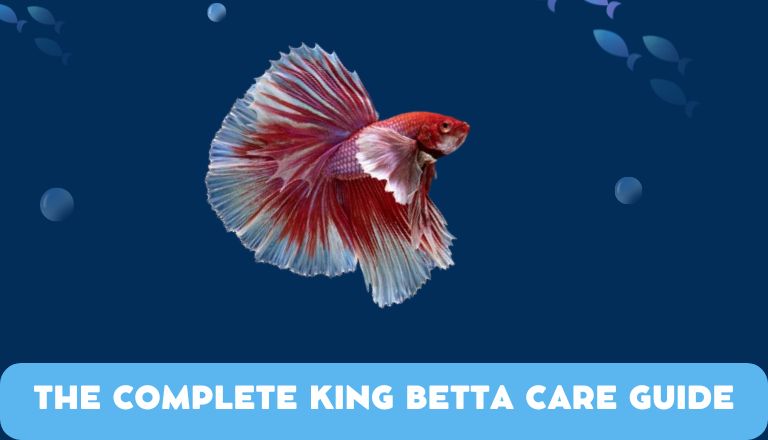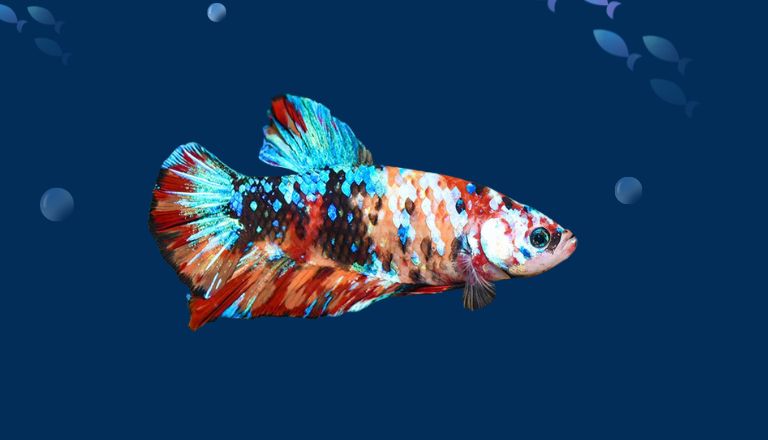The Complete King Betta Care Guide
Welcome to The Complete King Betta Care Guide, where we dive into the captivating world of one of the most regal freshwater fish: the King Betta. With their vibrant colors, flowing fins, and aggressive personalities, these aquatic gems have captured the hearts of hobbyists around the globe.
In this comprehensive guide, we will explore everything you need to know about providing optimal care for your majestic finned friend—from tank setup and water parameters to diet and socialization tips.
King Betta Facts & Overview
The King Betta, scientifically known as Betta splendens Regan, is a stunning fish with the title of royalty in the aquatic world. They originate from Southeast Asian wetlands. This captivating species belongs to the Osphronemidae family. They are larger than common bettas, males can grow up to 3 inches long.
They exhibit remarkable interactions when introduced into impeccably arranged environments with tank mates. Their aggressive demeanor leads them to defend their space fiercely.
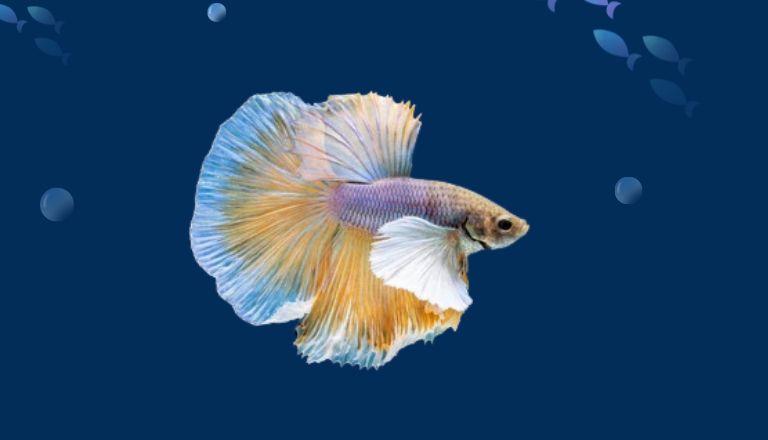
These fish possess a labyrinth organ that allows them to breathe atmospheric oxygen—an adaptation that bolsters their dominance in less oxygenated waters.
Typical Behavior
King Betta fish exhibit fascinating behaviors that reflect their underlying personalities. When placed in environments that don’t allow for adequate space or hiding spots, these fish can become aggressive, especially toward other males.
Social interactions among King Bettas are equally intriguing. They thrive in isolation due to their nature as solitary hunters. They display unique courting behaviors when paired with a female. Males often engage in elaborate displays of fin flair and bubble nest construction as part of their mating ritual. The male will chase the female and show off his fins until she’s ready to spawn.
Appearance
The King Betta boasts a striking appearance that sets it apart from other betta varieties. This fish can reach lengths up to three inches and is renowned for its flowing fins and vibrant colors. Male King Bettas feature elongated fins that ripple elegantly in water, resembling delicate silk drapes. They have hues ranging from deep blues and fiery reds to stunning purples and iridescent greens.

They have patterns on their scales. Some display dragon scaling, where their scales have a thicker texture reminiscent of dragon skin. Their large pectoral fins offer graceful movements through the water columns.
Habitat and Tank Conditions
Create the ideal habitat for a King Betta mimicking its natural environment. They thrive in warm, calm waters. Add a reliable aquarium heater to sustain the temperature range consistently, especially during colder months.
King Bettas are not fond of rapid water movement. They hail from shallow lakes and slow-moving streams where the currents are gentle. Use a filter with adjustable flow settings or one designed for low-output environments. Add plants like Java fern or Anubias.
Tank Conditions
Maintain the water temperature between 75 and 76 degrees Fahrenheit. Use filtration systems that have adjustable flow settings or add decorations to diffuse any strong currents. Maintain water hardness (dGH) between 5 and 20. Maintain a pH level between 6.8 and 7.
What Size Aquarium Do They Need?
King Betta fish thrive best in aquariums that provide ample space to showcase their beauty. A minimum tank size of 20 gallons is recommended. This larger volume allows them to swim freely and helps maintain stable water parameters. In a spacious environment, you can also incorporate plants and decorations.
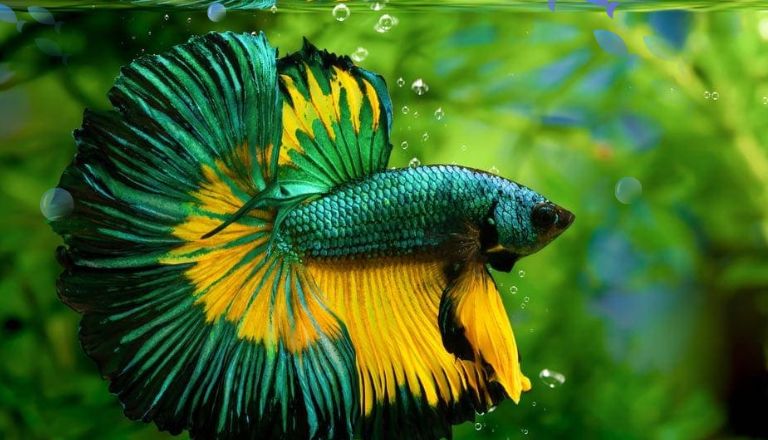
King Bettas are semi-aggressive fish. Smaller tanks can lead to heightened aggression as they might feel confined or threatened by other inhabitants.
King Betta Tank Mates
Choose a species that will harmonize with its temperament. Cory catfish are an excellent option. These little bottom dwellers keep the substrate clean while enjoying their social interactions.
Ghost shrimp also make a fascinating addition to a Betta tank. Their transparent bodies blend seamlessly with the scenery. They scavenge leftover food and debris without bothering your Betta. Introduce them when they’re still small, as larger shrimp may become targets of curiosity—or worse—hunger!
Guppies add color and vibrancy to the aquarium. Robust can create an interesting dynamic.
Kuhli loaches offer versatility as they’re not only delightful with their eel-like appearances but also completely non-aggressive.
Diet
In the wild, these vibrant creatures feast on small insects and larvae. They thrive on a high-protein diet. Provide them with quality pellets specifically designed for bettas. These pellets should contain at least 40% protein to replicate their natural food source.
You can include frozen or live foods such as bloodworms or daphnia in their diet. This enhances their color but also encourages more activity and displays of vivid behavior. Moderation is key; overfeeding can lead to health problems like swim bladder disease. A varied diet keeps King Betta healthy and lively, mimicking its natural feeding habits in the wild.
Care
These fish are vibrant and full of personality, their environment must reflect that. A spacious tank with plenty of hiding spots encourages natural behavior, reducing stress. Live plants and decorations not only enhance the aesthetics but also create a sense of security for your pet.
Feeding is another essential aspect of care. King Bettas enjoy high-protein diets like pellets or frozen foods. Feed them a variety of diets. This ensures they get all the nutrients they need.
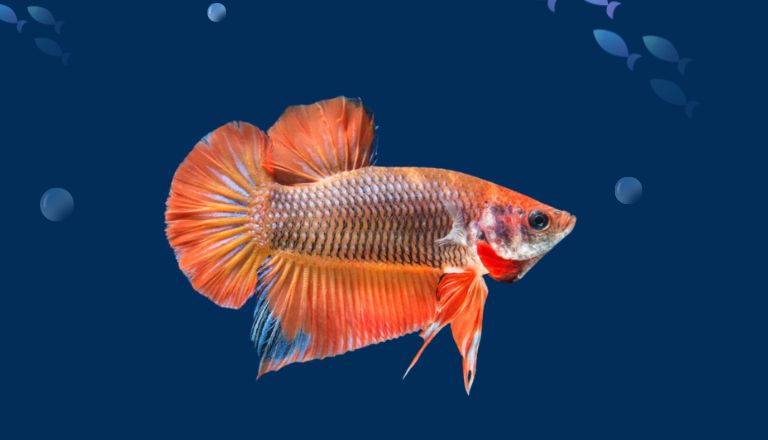
Monitor the water quality as well. Regularly check parameters such as temperature and pH levels to ensure a healthy habitat. Use a quality filter to improve water conditions.
Breeding the King Betta
Breeding King Bettas can be an exciting venture for fish enthusiasts. To begin, choose healthy parent fish with desirable traits—bright colors, large fins, and good temperament. This selection ensures that their offspring inherit these stunning characteristics.
Create the right environment for successful breeding. A spawning tank should be set up with gentle filtration and plenty of hiding spots. Styrofoam cups or plants can provide excellent shelter for the female during courtship. Once your male is ready to impress the female, he will build a bubble nest—a sign that he’s prepared to mate. Watching this process unfold can be mesmerizing as they dance together in a delicate ballet of attraction.
After spawning occurs, remove the female to protect her from aggressive behavior from the male once fertilization takes place. The eggs will cling to the bubble nest until they hatch into tiny fry. Raising those fry requires careful attention; they need high-quality food and clean water to thrive. With patience and dedication, you’ll be rewarded with a new generation of striking King Bettas swimming in your aquarium!
Conclusion
Caring for a King Betta requires attention to their specific needs. Provide them with a spacious tank, clean water, and a balanced diet for optimal health. Regularly monitor their environment and look out for any signs of stress or illness. These beautiful fish thrive in calm and stable conditions. By following this guide, you can ensure your King Betta lives a long and happy life—so start setting up their perfect home today!
FAQs
What is the Difference Between a King Betta and a Regular Betta?
King bettas and regular bettas are both popular types of fish, but they have some key differences. King bettas are generally larger than regular bettas. A regular betta usually grows to about 2.5 inches, king bettas can reach sizes of up to 4 inches or more. This size difference makes them stand out in aquariums. They also have differences in their fin shape and color.
Are King Bettas More Aggressive?
Yes, King Bettas are generally more aggressive than other types of betta fish. They are known for their larger size and vibrant colors. This aggression is due to their territorial nature. In the wild, male bettas defend their space from other males. This behavior carries over into captivity.
Can King Bettas Live with Other Fish?
King bettas can be quite territorial. They usually prefer to live alone because they can become aggressive towards other fish, especially those with long fins or bright colors. If you want to keep a king betta with other fish, choose species that are peaceful and have different body shapes. Good options include certain types of tetras, rasboras, or snails.
How Long do King Bettas Live?
King Bettas typically live for about 3 to 5 years in captivity. With proper care, some can live even longer. Their lifespan can be influenced by factors like water quality, diet, and tank conditions.
How Big of a Tank do King Bettas Need?
King Bettas needs enough space to thrive. A minimum tank size of 20 gallons is recommended for a single King Betta. This size allows them to swim freely and explore their environment. Larger tanks, like 20 gallons, provide even better conditions and can help keep the water quality stable.

